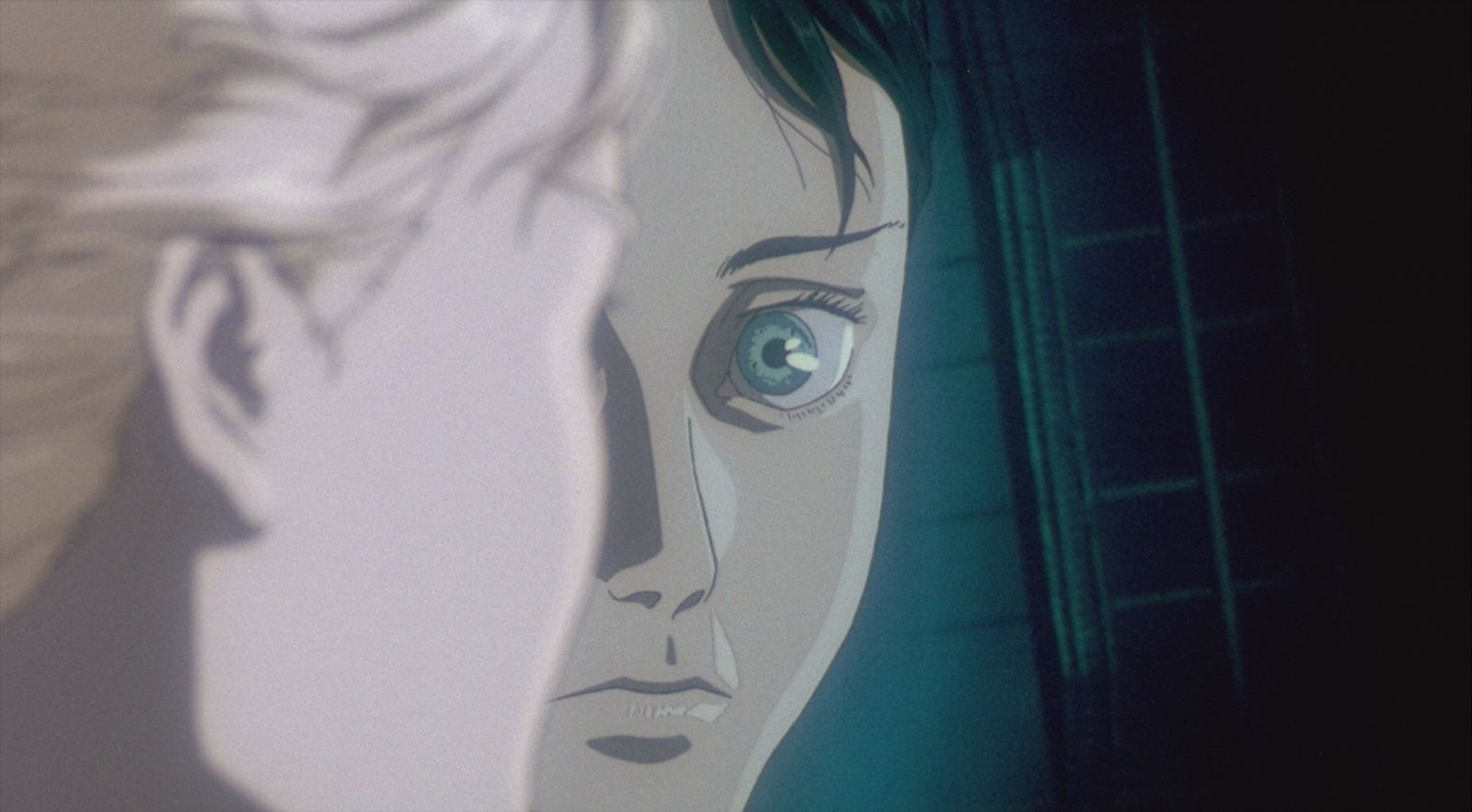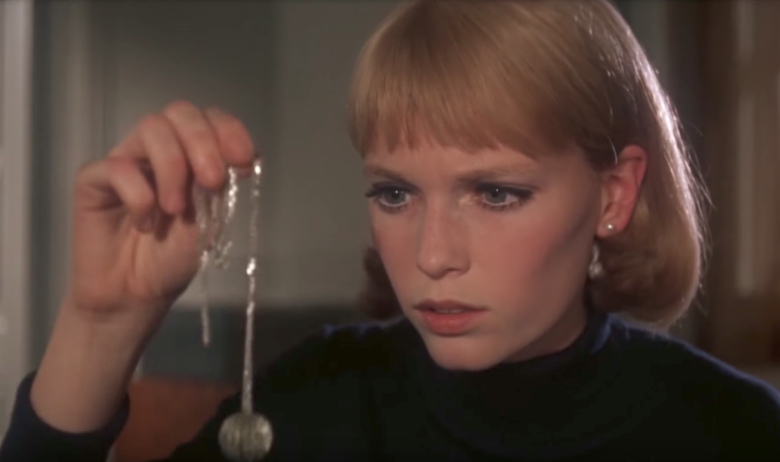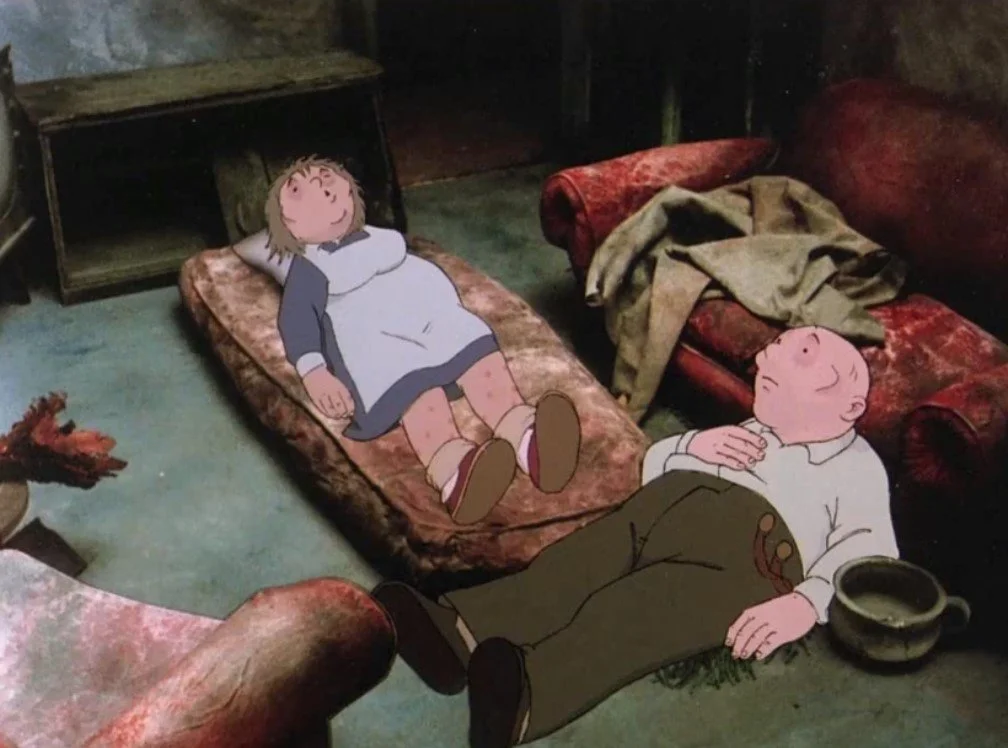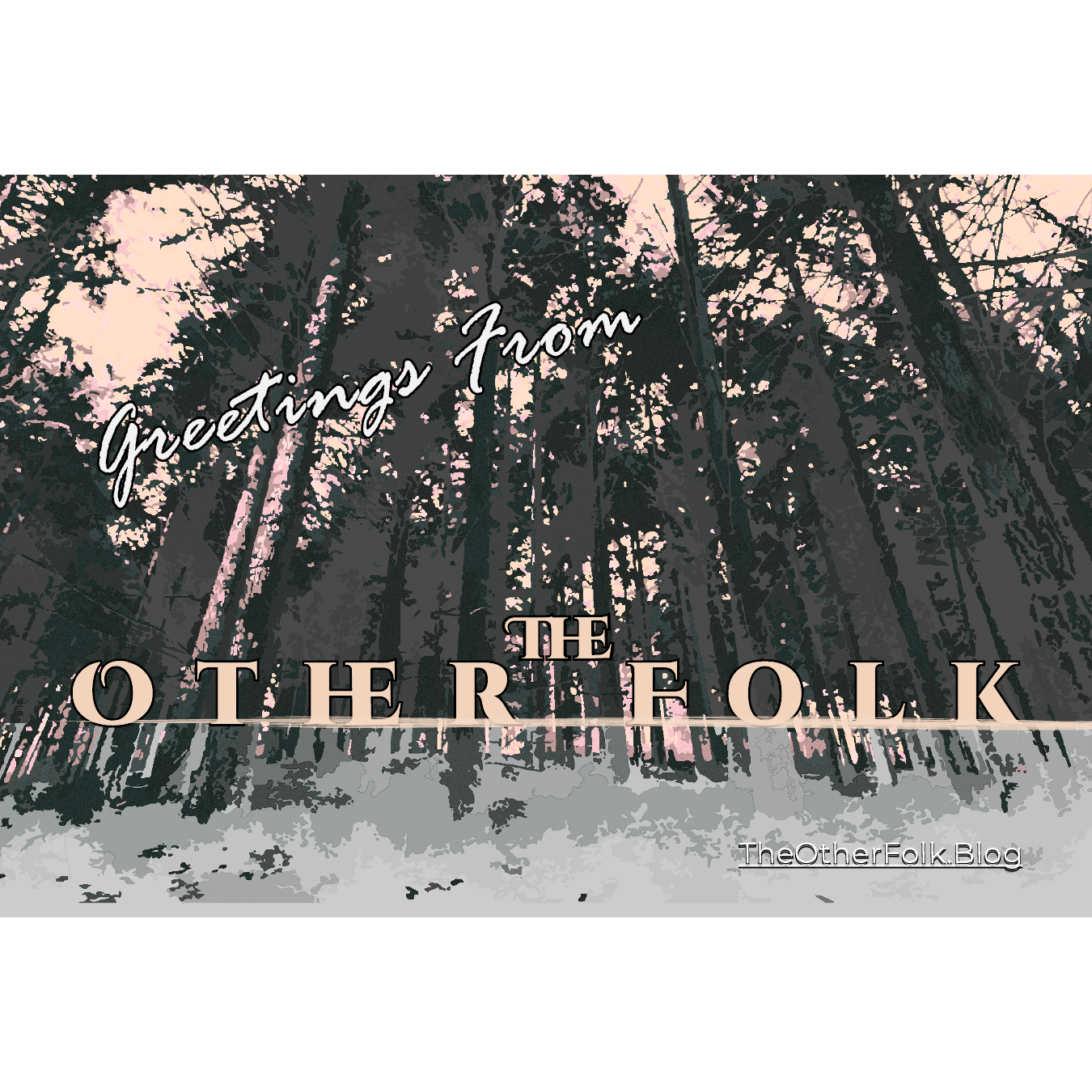On the surface, the ending of the 1920 classic silent film, The Cabinet of Dr. Caligari seems to be contradict the anti-authoritarian themes throughout the rest of the film—and in German Expressionism more broadly. But the lingering strangeness of the sets and that final, sinister shot of the Director suggest that the frame story is a deliberate deception, not merely something tacked on against the will of the writers that totally screws up their otherwise-masterpiece. As a bit of meaningful misdirection, the frame subverts our expectations and demands reinterpretation.
Perfect Blue likes to jar audiences out of escapism and suspension of disbelief as a way to get us to think critically about the film as a film—as a story, a fantasy, a constructed narrative. When you engage with the film in this way, assuming the film itself knows it’s a film, the nature of the story changes. It becomes clear that the film’s “reality” has been invaded by a surreality brought on by fan obsession with the fantasy of a J-pop idol. That fantasy comes to literal life in the film, as a metaphor for the real-life dangers of immersion, suspended disbelief, and escapism in the arts.
Richard Adams Watership Down and its 1978 animated adaptation carries an environmental message of letting nature run its course that can feel quaint in a world of ongoing and drastic human-caused climate change. But its humans, especially in the book, are incomprehensible, godlike creatures bringing death, destruction, and madness to the creatures they touch. In that context, the quaint message becomes heartbreakingly nostalgic for a time when stepping away from nature and letting it run its course might have been possible.
The 2019 Netflix film I Am Mother received a lot of attention at the time of its release for being an expertly crafted film with a small, but very talented cast, and spot on special effects. Sprinkled through the positive reviews, though, are claims that it’s an anti-abortion screed (or an “artful” take on “pro-life themes,” depending on the critic writing about it). We explain why it’s definitely not anti-abortion, as well as what it’s actually about: robots being bad at ethics.
Ghost in the Shell tells the story of humanity's crossing the event horizon that draws us into a spiral toward meaninglessness and slow oblivion as we approach the technological singularity.
All three shorts in this bizarre collection develop shared and interrelated themes that, taken together, tell a narrative of environmental horror brought on by modern human greed, materialism, and self-delusion about the doom we’ve created.
Ken Russell’s The Devils (1971) has been called the most controversial film in Hollywood history. Not just controversial for its time, Russell’s masterpiece remains shocking to this day in its depictions of cruelty, orgiastic sexuality, the evils of the 17th-century Catholic Church, and blasphemous imagery.
The film tells an old historical truth about political martyrs … and gets censored for it.
The ham-fistedness of Ready or Not fits the carefully-crafted and well-paced balance of quippy, campy, self-aware pulp horror/comedy. The film doesn’t waste a single moment of screen time and pays close attention to the arcs of its three main characters through the deconstruction of Grace's wedding dress as she finds herself hunted in The Most Dangerous Game: Satanic Mansion Edition.
Rosemary’s Baby and the films that have followed it draw clear lines between Satanic cults and capitalism. They tell stories about the evils that unchecked, late-stage capitalism incentivizes: selfishness, greed, ruthlessness, and the sacrifice of others for status, wealth, power, and privilege.
There’s a rich film tradition drawing on and indulging humanity’s long and ongoing history of Satanic panics. In We Summon the Darkness (2019), though, the Satanists we need to watch out for are a congregation of Christians following a televangelist who fancies himself “the wrath of God.” That man, Pastor John Henry Butler is, in our reading of the film, the physical embodiment of Satan on Earth. The fallen Lucifer, warped by pride and a lust for power.
A woman takes folkloric and supernatural vengeance on her mother's abuser in this Fable for the Dying by Shelly Jones.
My father prided himself on hunting for sustenance, never sport. His favorite game was deer. He would bring it home, remove its hide and hang it up to let the blood drain from its body. This would be a fine way of preparing an animal for food if he didn’t use my jump ropes, and even that wouldn’t be so bad if he didn’t also hang the deer from the basketball goal at the edge of our driveway.
A one night stand turns into something altogether monstrous in this short story from Matt Cantor.
A narrative prose poem set in the mid-twentieth century. A man rents a room where he plans to host weekly poker games, but the home is haunted by a poltergeist whose supernatural screeching and tantrums disrupt the games. Years later, the man's niece imagines what sort of violent history must have taken place to bind the spirit there.
A fairytale retelling, in which a mother’s love conquers all.
In a village reduced to rubble during World War II, a woman searches for the mysterious, unceasing cries of an infant who couldn’t possibly be alive.
A photographer passing through Pittsburgh stops to take pictures of the city’s Fountain of Youth, where she finds, and loses, herself.
During his tenure as host of TV's The Price Is Right!, Bob Barker made it his mission to advocate for the spaying and neutering of pets. He ended nearly every episode of the show reminding us to do so. Even after he dies—even after we all die—his mission will not end.
Artwork partly adapted from a Photo by Michael Held on Unsplash.
When a woman's rabbits get possessed, she tries her damnedest to pretend everything is fine.
Looking for a way out of his hometown, a man descends into an old network of tunnels once used in the Underground Railroad.
An essay in which we ramble a bit and try to work out our own thoughts about a peculiar and often disorienting subgenre, lyric horror, before we look more closely at specific films in our upcoming Dissections series. Think of this Judgment as a first draft of our thoughts on lyric horror.
(In fact, think of this kind of essay as a new kind of Judgment article. The Pre-Dissection Thinky-Definey Essay, in which we think our half-informed thoughts and define some of the terms and ideas we’ll explore in the series.)
Directors Aaron Moorhead and Justin Benson’s 2017 film The Endless conveys its fairly complicated concept in a way that makes enough sense to feel believable, but it also withholds enough explanation to make that same concept feel incomprehensible on a cosmic scale. This partial sequel to 2012’s Resolution manages to do all of that with a very human-level story about the relationship between two brothers as they return to the cult that raised them after their mother’s death and gradually resolve their conflicting memories.
Eric gives supplementary notes updating Susan Sontag's "Notes on Camp," bringing a modern, horrific eyeball to the classic essay.
Since his horror debut with 2017’s Get Out, Jordan Peele has proven himself again and again to be an incredibly gifted writer and director, one who’s brimming with love and knowledge of the horror genre. His third film, Nope, is his most ambitious and complex outing to date. That has apparently confused some parts of the internet. We’re here to tell you to ignore those wrong people and listen to us: Nope is downright masterful, and every horror fan should see it.
Watership Down has a reputation as a devastating experience for a kid’s movie. Boomers took their Xer kids to see it unaware that it featured the massacre of so many cute cartoon bunnies. They should’ve watched the trailer… I only saw it as an adult, but it would’ve been perfect for a kid like me.
Based on Raymond Briggs’ 1982 comic book of the same name, When the Wind Blows tells the bleak and unrelentingly tense story of a doddering elderly couple who must survive a nuclear bomb dropped in rural England. The film is heavy-handed in some of its imagery and especially its music—arranged by Roger Waters of Pink Floyd—but in spite of these shortcomings, it manages to strike all the right emotional chords and succeeds surprisingly well.
The Batman embraces the comic book legacy of horror and mystery underpinning the World’s Greatest Detective, the Dark Knight, the Defender of Gotham. And it works, producing one of the hero’s best onscreen iterations and one of DC’s best superhero movies to date.
Happy V-Day! Here are a few love-themed horror movies about falling in and out of love, about spurned and unrequited lovers, and about one man, “a legend they say, who hates Valentine’s Day.” These aren’t ranked or rated. They’re just movies we think are worth a couple hours of your time.
Ultimately, meta-ness may be the defining element of the Scream franchise. With Scream (5), Bettinelli-Olpin and Gillett have managed to build a requel/soft reboot around the original’s meta-skeleton that, in our estimation, actually lives up to Wes Craven’s legacy.
Satanic Panic isn’t getting at anything new, and it’s not what we’d call especially artful. But we would call it a playfully gross film that says what’s been said before with great gory gusto.











































